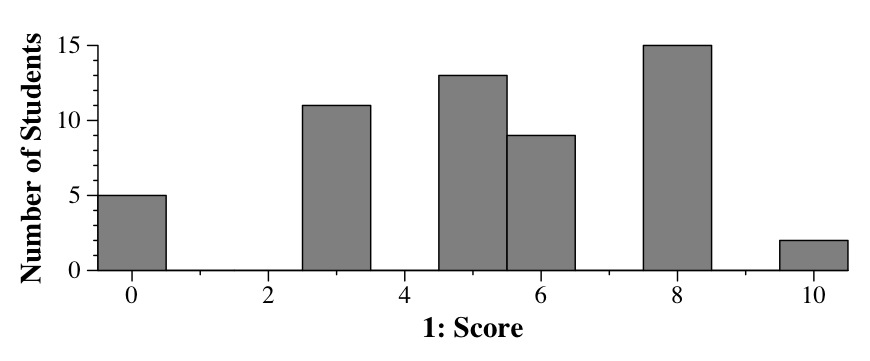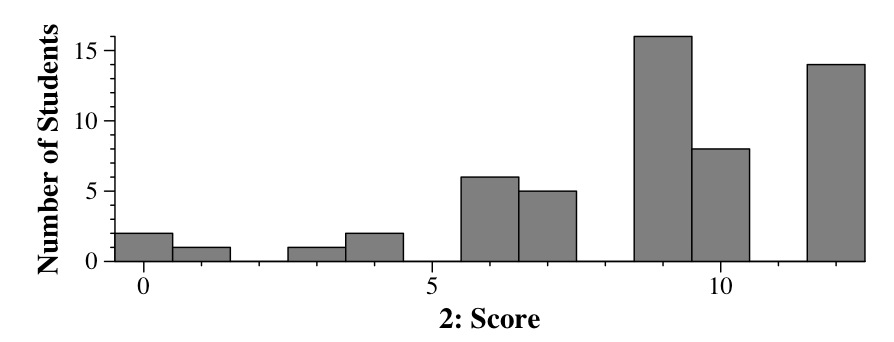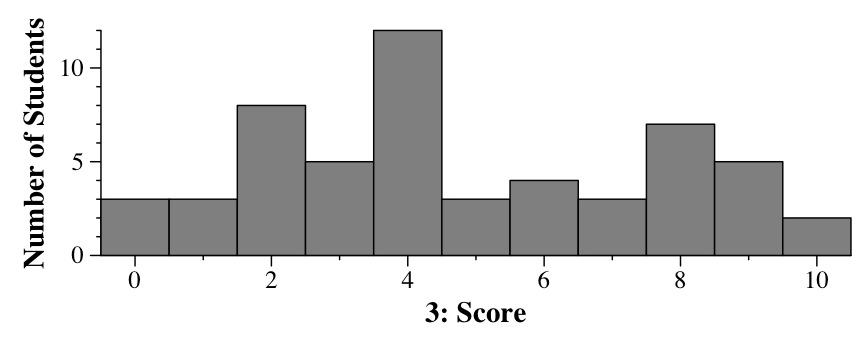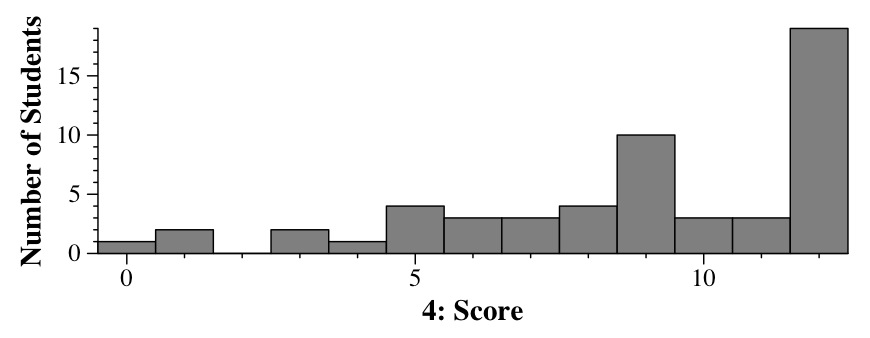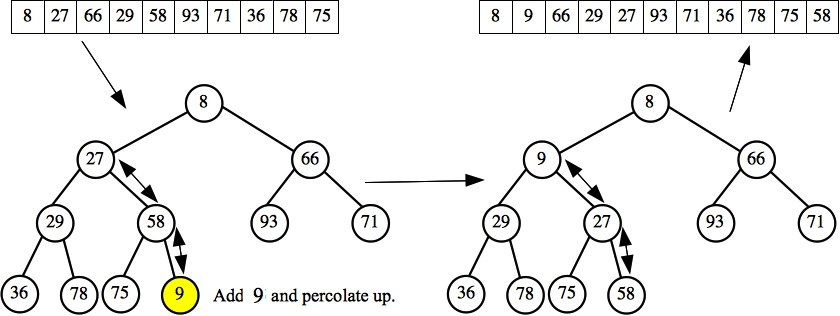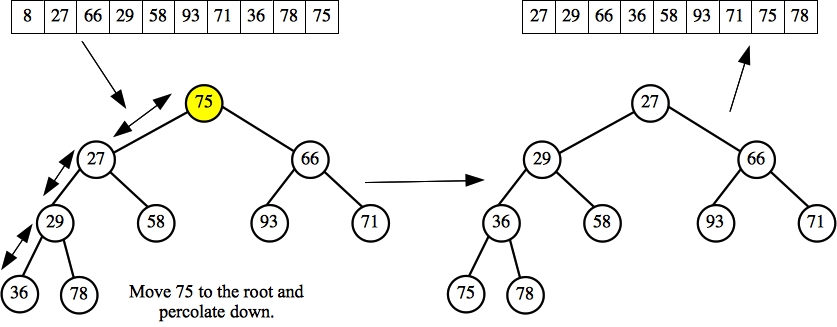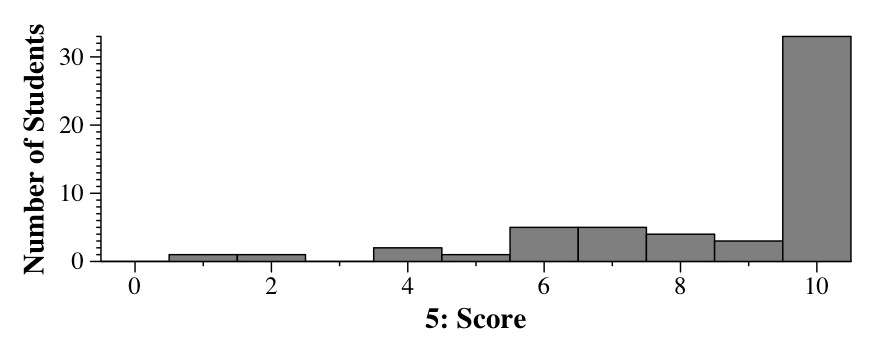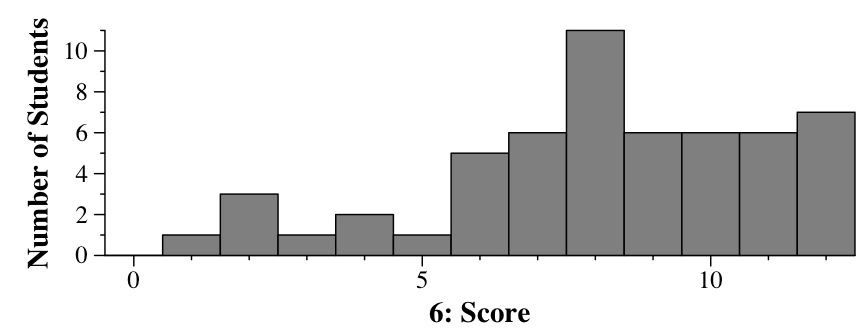CS302 Midterm, Fall, 2013
James S. Plank
Answers and Grading
Question 1: 10 points
This is permutation code, straight from the lecture notes, except I'm permuting
integers rather than strings. Also, I'm starting the permutation with index 1, so
the 10 will never be moved from slot 0. Since we are permuting 5 elements (the
10 never moves), there will be 5! lines printed.
UNIX> a.out | head -n 6
10 11 12 13 14 15
10 11 12 13 15 14
10 11 12 14 13 15
10 11 12 14 15 13
10 11 12 15 14 13
10 11 12 15 13 14
UNIX> a.out | wc
120 720 2280
UNIX>
The answers are g and a
Grading
Part 1: 5 points for g. Three points for e or h.
Part 2: 5 points for a. Three points for b.
Question 2: 12 points
These are all straight from the lecture notes. Grading is 1.5 points each.
- A. Deleting an element from a map with n elements: O(log(n))
- B. Constructing a heap from a vector with n elements: O(n)
- C. Performing union() on a disjoint set instance with n elements: O(1)
- D. Performing find() on a disjoint set instance with n elements: O(α(n))
- E. Performing upper_bound() on a map with n elements: O(log(n))
- F. Inserting an element into a map with n elements: O(log(n))
- G. Performing pop() on a heap with n elements: O(log(n))
- H. Performing push() on a heap with n elements: O(log(n))
Question 3: 10 points
This is pretty straightforward bit arithmetic. Since the integer is less than 108,
it is easily less than 230. In the code
below, I calculate the largest digit that
is set, and then go from that digit down to the smallest digit, adding either a '0' or a '1'
to the string:
string bits(int n)
{
int md, i;
string rv;
md = 0;
for (i = 1; i < 31; i++) {
if ( (1 << i) & n ) md = i;
}
for (i = md; i >= 0; i--) {
if ( (1 << i) & n ) rv.push_back('1'); else rv.push_back('0');
}
return rv;
}
|
In q3.cpp, I've added main(), which reads from standard
input, and prints the result of bits().
Grading
10 points. I grade these pretty much on how well I think your solution addressed the
problem. I did deduct for the following problems:
- Bad procedure prototype.
- Leading zeros.
- Doesn't handle zero.
- Called push_back() with a string instead of a char.
Question 4: 12 Points
- A: 20
- B: There are four elements whose links are -1, so 4.
- C: 20 - 4 = 16
- D: Since links of 1, 4 and 8 are 0, the size of set 0 is at least 4.
Since ranks[0] equals 2, it cannot be holding the size.
- E: Set 0 = 4. Set 2 = 13. Set 11 = 2. Set 12 = 1.
- Call find(e) when e equals 9, 13, 14, 16, 18 or 19. If the implementation uses
path compression, then after the find() call, ranks[e] will equal 2. Otherwise,
it will be unchanged.
Grading
10 points. I grade these pretty much on how well I think your solution addressed the
problem. I did deduct for the following problems:
- A, B, C: one point each.
- D: two points.
- E: four points
- F: three points.
Question 5: 10 Points
- A: Straight from the lecture notes: (i-1)/2 (integer division): Two points
- B: 2i+1 and 2i+2: Two points
- C: { 8, 9, 66, 29, 27, 93, 71, 36, 78, 75, 58 }: Three points
- D: { 27, 29, 66, 36, 58, 93, 71, 75, 78 }: Three points
Question 6: 12 Points
This one was nearly identical to the Topcoder problem that I assigned in lab:
TCCC 2005, 250-Pointer (Fairness). I had hints for that program in
http://web.eecs.utk.edu/~jplank/plank/classes/cs302/Topcoder/Fairness.html, although since
this program has no constraints, you can't do the second solution. Instead, you need
to have a map keyed on the averages, whose second's are vectors of names. When
you insert an average into the map, you call push_back() to put the name onto the vector.
The answer is in
q6.cpp:
#include <iostream>
#include <vector>
#include <map>
#include <string>
using namespace std;
main()
{
string s;
map <double, vector <string> > m;
map <double, vector <string> >::iterator mit;
double t, n, avg;
int i;
while (cin >> s) {
t = 0;
n = 0;
for (i = 0; i < s.size(); i++) {
n++;
t += s[i];
}
avg = t/n;
m[avg].push_back(s);
}
for (mit = m.begin(); mit != m.end(); mit++) {
for (i = 0; i < mit->second.size(); i++) {
cout << mit->second[i] << endl;
}
}
exit(0);
}
|
Grading
As always, grading on these programs is dictated by how well I feel your
answer conveys that you know what's going on, and how well your code works.
Roughly:
- Calculating the average: 4 points
- Creating the data structure: 4 points
- Traversing the data structure: 4 points
- Plus you get deductions for random things that you did incorrectly.
